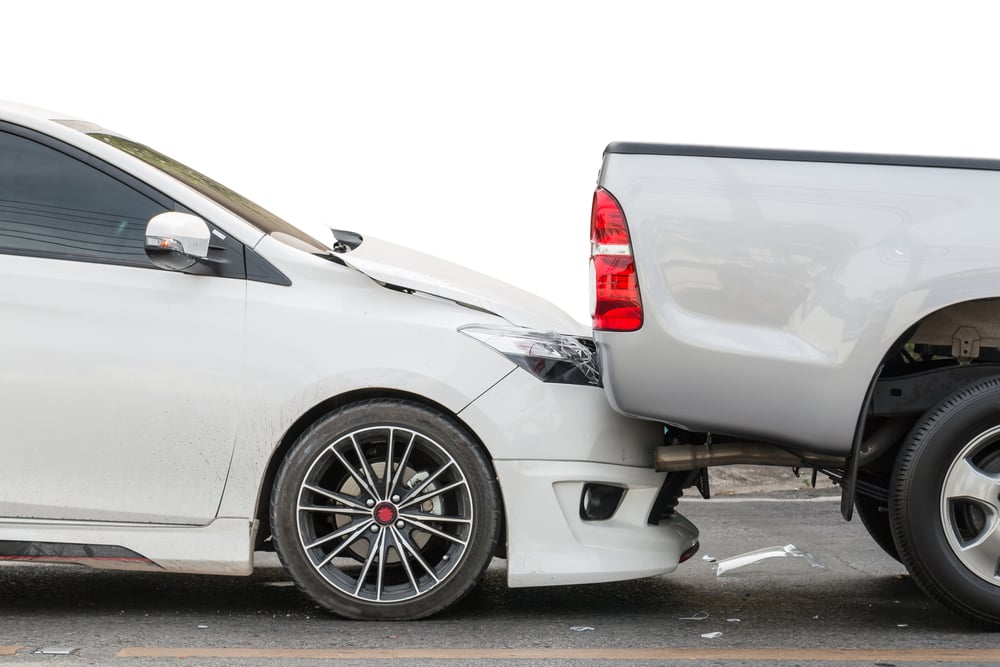Whether you’re buying a used car from a dealer, private seller, or any other party, it’s important to understand its condition. If a used car has been involved in a major car accident, its quality could be compromised – even if it was repaired well.
And even a clean bill of health from a Canadian service like CarProof isn’t necessarily a guarantee that a car is totally damage-free, as CarProof requires insurance companies and mechanics to “opt-in”, and send information on their own.
So to help you as you shop for used cars, Ride Time is here with a quick overview of examining vehicles for structural damage! We’ll go over the most commonly damaged areas, and discuss how you can spot potentially-damaged areas when examining a car for the first time.
1. The Front Bumper
The front bumper is, by far, the most commonly-damaged structural component of a vehicle. Collisions and inattentive driving can cause damage to the bumper, and even require it to be replaced.
To see if a front bumper has been replaced, start by examining the color. Is it exactly the same as the rest of the car? Or is there a slight difference in color?
You can also run your finger along the bumper. If it has been repainted, it may feel somewhat “bumpy”, due to uneven distribution of paint – this is a sure sign that a bumper has been replaced.
2. Fenders
The fenders are sometimes confused with the bumpers, but they’re totally different, and easy to distinguish. While the bumpers protect the front and rear of the car, fenders protect the wheel-well, and they absorb quite a bit of impact during crashes.
A replaced fender panel may be a somewhat different color than the rest of the vehicle, and a fender that’s been straightened instead of replaced may be somewhat bent and out-of-shape. If a fender has been replaced, it’s almost a guarantee that the vehicle in question was involved in a serious accident.
3. The Rear Bumper
Rear bumpers are often damaged in car collisions, so it’s important to check them, too. Whether it’s from backing up into a post, an accidental scrape, or a rear-end collision, bumpers can get very dinged up – and a replaced bumper is a sign that a car has had serious damage done to it.
Again, it’s best to examine the rear bumper for signs that it has been replaced. Small cracks in the metal or plastic are also signs that the car may have been involved in an accident, and the owner didn’t bother to replace the rear bumper.
4. The Grille And Front Panel
A damaged grille can restrict airflow, and seriously impact the appearance of a car. Luckily, grille damage is fairly easy to spot.
Check to see if there are severe scrapes on the grille, or if there are any areas that seem somewhat bent or out-of-place – this could be a sign that the car was in an accident, and the grille was simply straightened out instead of replaced.
5. The Hood
If a car has been in an accident, it’s likely that the hood needed to be replaced. The hood is delicate, and because it must latch perfectly onto the rest of the car, it’s difficult to restore a damaged hood, and replacement is usually necessary.
Again, color and texture are the primary giveaways for a replaced hood. Run your finger along the hood, and feel for any rough patches, or areas where it feels like the paint is more flat – this is a sign the hood has been oversprayed to match the rest of the car.
6. Trunk Lid
The trunk lid is commonly damaged in rear-end accidents. When these kinds of accidents occur, the trunk lid will usually be too bent to latch properly, and could pop open while driving if it’s not replaced.
To identify a replaced trunk, open the trunk and see how smoothly it opens. Examine the inside of the interior – is the inside of the trunk lid a different color? Does it latch properly and smoothly? If not, these are signs that the trunk lid may have been replaced in the past.
7. Front And Rear Doors
The side-panels and doors of cars are often damaged during collisions – whether rear-end, head-on, or side collisions. Damaged car doors are usually replaced, as they’re quite delicate and can’t be reshaped and reused.
Besides the standard examination of paint and texture, it’s helpful to look at the inside of a car door, to determine whether or not it has been replaced. Do all of the buttons on all of the car doors look the same? Is the style similar? Does one door look newer than the rest?
If the answer is “yes”, the car door has been replaced – and the vehicle likely suffered serious damage in an accident.
Know What To Look For When Buying A Used Car!
Not all used cars are built alike. Even when they clear CarProof, some used vehicles may have unreported damage – and you can only spot it by using the above guide.
So forget private sellers! Come to Ride Time to find the used car of your dreams! With a huge stock of top-quality vehicles, all of our cars have a clean bill of health, and we can prove it!
Come into Ride Time’s Winnipeg dealership today, and start shopping for the used car of your dreams.



No Comments